
If you’re in the market for a Raspberry Pi 3 Model B+, unless you’re one of the Raspberry Pi foundations’ existing industrial customers, you’ve got more of a chance of finding the pot of gold at the end of the rainbow than getting stock of the 3B+ at the moment. It’s not all bad news, though. OKdo has two almost drop-in Raspberry Pi alternatives in the form of the ROCK 3 Model A and ROCK 3 Model C boards that will meet the 3B+ specification and more, so let’s have a look at this comparison.
Author: Peter Milne, engineer and Linux advocate with probably more SBCs than a Chandrayaan-3 moon lander.

Specifications
Explore the technical specs of each board in this comprehensive side-by-side comparison.
Here are the specs:
| ROCK 3 Model A | ROCK 3 Model C | Raspberry Pi 3 Model B+ | |
| Availability | Available | Available | Sold Out |
| SoC | Rockchip RK3568 | Rockchip RK3566 | Broadcom BCM2837 |
| Processor | Quad‑core Arm® Cortex®‑A55 (ARMv8) 64‑bit @ 2.0GHz | Quad‑core Arm® Cortex®‑A55 (ARMv8) 64‑bit @ 1.6GHz | Quad‑core Arm®, Cortex®-A53 (ARMv8) 64-bit @ 1.4GHz |
| Clock | 2.0GHz | 1.6GHz | 1.4GHz |
| GPU | Arm Mali™ G52-2EE | Arm Mali™ G52-2EE | Broadcom Videocore-IV |
| Memory | 2GB LRDDR4 SRAM | 1GB / 2GB LRDDR4 SRAM | 1GB LPDDR2 SDRAM |
| Power | USB Type-C™ PD / Qualcomm® Quick Charge™ / GPIO | USB Type-C™ / GPIO | Micro-USB 5V/2.5A |
| HDMI | 1x HDMI 4K@60fps | 1x HDMI 1080p@60fps | 1x HDMI 1080p@30fps |
| USB | 2x USB2 HOST / 1x USB3 HOST / 1 x USB 3.0 OTG-HOST | 2x USB2 HOST / 1x USB3 HOST / 1x USB2 OTG-HOST | 4 USB 2.0 PORTS |
| Audio Ports | 3.5mm jack – stereo output/mic input | 3.5mm jack – stereo output/mic input | 3.5mm jack – stereo output |
| Connectivity | M.2 E Key / Gigabit Ethernet | 2.4GHz and 5GHz IEEE 802.11b/g/n/ac Wireless LAN / Bluetooth 5.0 / Gigabit Ethernet | 2.4GHz and 5GHz IEEE 802.11.b/g/n/ac Wireless LAN / Bluetooth 4.2 / Ethernet (300bps) |
| MIPI | 1x 2 lane DSI / 1x 2 lane CSI | 1x 2 lane DSI / 1x 2 lane CSI | MIPI DSI / MIPI CSI |
| Storage | Micro SD / eMMC / M.2 M Key NVME / SATA | Micro SD / eMMC / M.2 M Key NVME / SATA | Micro SD |
| UARTS | 5x UART | 5x UART | 2x UART |
| RTC | Yes | No | No |
| Power On/Of | Yes | Yes | No |
| Software | Debian / Ubuntu / Android 11/ Armbian / etc | Debian / Ubuntu / Android 11/ Armbian / etc | Raspberry Pi OS / Ubuntu / LibreELEC / etc |
| Operation Temperature | 0~50 ℃ | 0~50 ℃ | 0~50 ℃ |
Download the comparison table below.
ROCK 3 Model C
In many respects, the ROCK 3 Model C is most similar to the Raspberry Pi 3 Model B+ but has several useful additional features that RPI 3B+ can’t match, so I’ll focus on these.
Both boards have a 64-bit, quad-core, Arm SoC with the Raspberry Pi 3 Model B+ featuring the Cortex A-53 mid-range processor, and the ROCK 3C has the low-power Cortex A55 cores.
If you run the same benchmark test on both of them (I used Sysbench to max out all 4 cores with a compute load), you will get virtually identical results, except the 3C will consume almost half the power, and it runs much cooler as a result. So, if you need to improve your products’ green credentials, this is significant.

ROCK 3C – high-quality graphics processing
If it’s graphics processing you’re interested in, then the ROCK 3C will give you HDMI 1080p@60fps as opposed to 1080p@30fps on the RPI 3B+, making a noticeable difference to the quality of the video output. The ROCK 3C’s Mali GPU has a far greater range of support for graphics rendering APIs that give it the edge here. This is also where the 2GB RAM version of the ROCK 3C can help performance, whereas the RPI 3B+ is limited to just 1MB RAM.
Both boards have the same Wireless LAN capabilities. The difference comes when using Bluetooth. The ROCK 3C complies with Bluetooth v5.0, which can give a significantly higher range, broadcast capability and throughput than the v4.2 supported by the RPI 3B+.
More connectivity and storage options
For wired connectivity, the ROCK 3C has true Gigabit Ethernet, whereas the Raspberry Pi 3 Model B+ is limited to 300bps due to sharing bandwidth with the USB bus. Both boards have POE available.
Now for the really tasty bit. The Achilles heel of the Raspberry Pi 3 Model B+ has always been its reliance on SD card media to store the OS and data. With the 3C, you have the option of using dedicated eMMC memory, giving slightly superior performance and much greater reliability and security. The eMMC connector is on the underside of the board, and modules are available from 16GB up to 128GB.
You could always hook up USB to SSD as a storage solution, but again, the Raspberry Pi 3 Model B+ is limited to 4 x USB 2.0 ports, affecting throughput (and sharing with Ethernet) compared to the ROCK 3C’s 1 x USB 3.0 and 3 x USB 2.0 ports, one of them is configured as OTG.
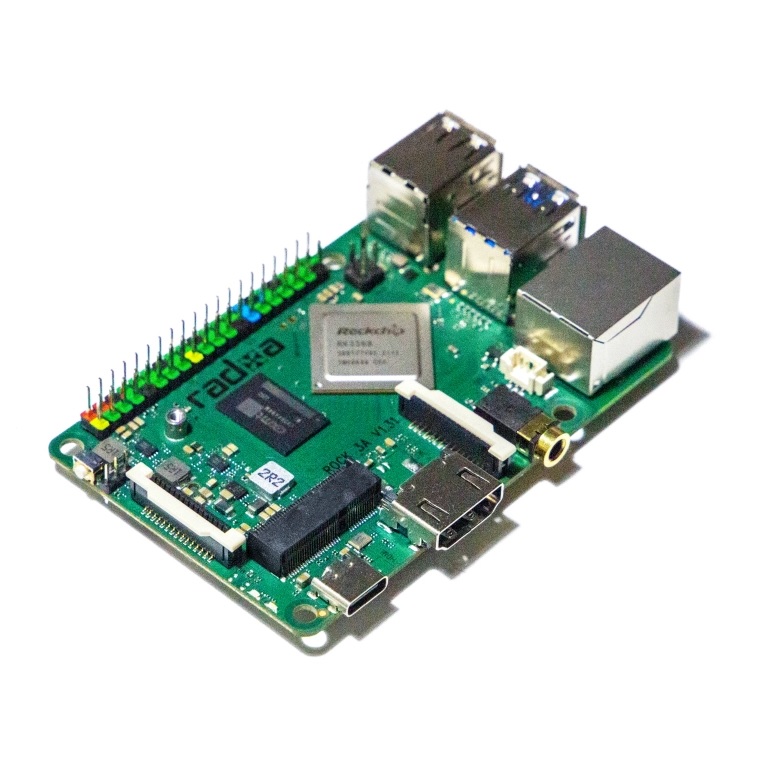
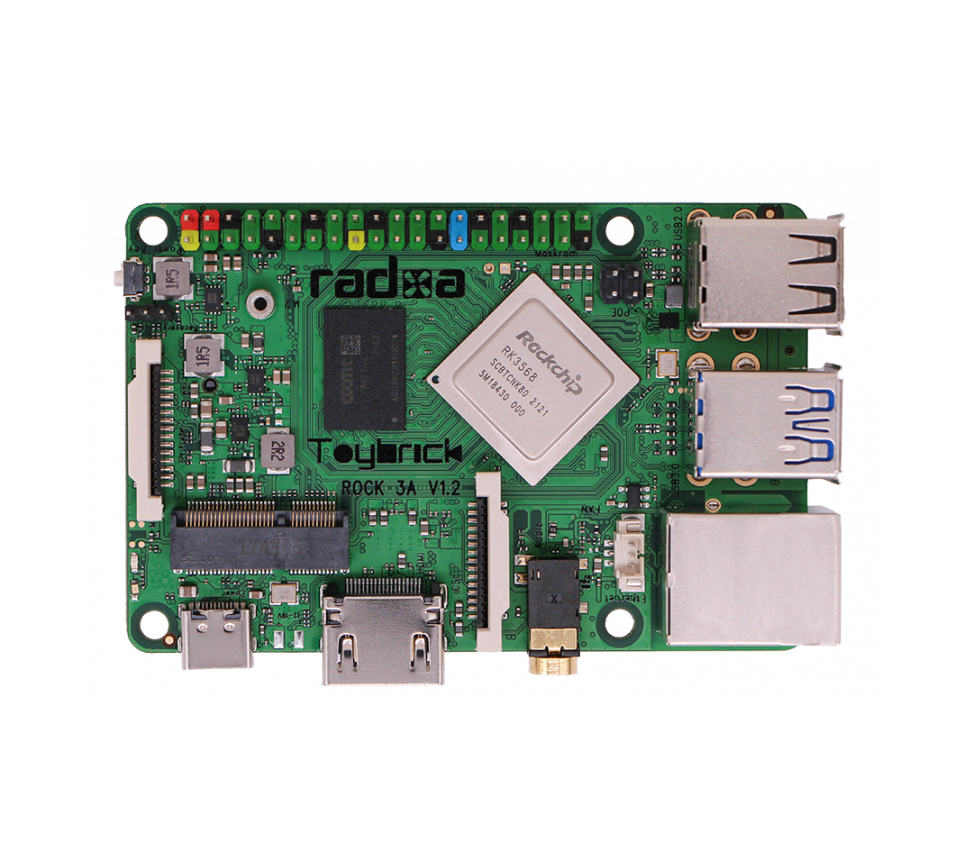
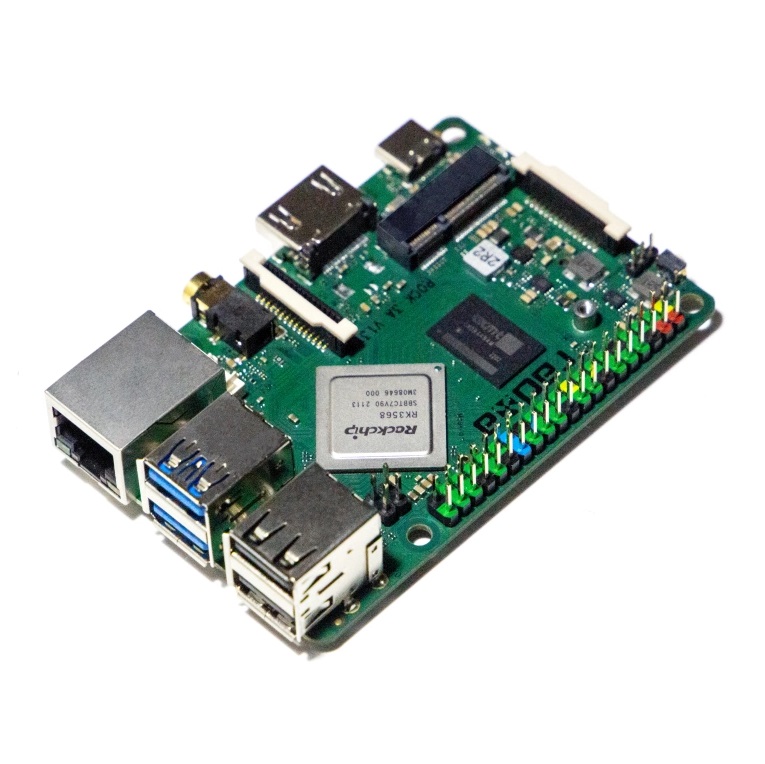
If you need high-performance, large capacity data storage, the ROCK 3C has an M.2 M‑Key 2230 connector with single lane, PCIe 2.1 and SATA 3.0 combined interfaces. The M.2 slot can be configured either to support NVMe or SATA SSD devices; an additional adapter board is required for SATA support.
The final niceties include a 2-pin fan header with PWM capability and an on / off push-button to safely power the system on and off, and there’s a microphone input on the audio jack.
Physically, the ROCK 3C has the same dimensions and mounting hole geometry as the RPI 3B+, with the exception of the USB-C power connector, so it fits existing RPI 3B+ cases by widening the power connector aperture.
ROCK 3 Model A
Now, let’s change up a gear with the ROCK 3 Model A. This has a slightly higher price point than the ROCK 3 Model C and Raspberry Pi 3 Model B+, but it has the extra horsepower to go with it.
The board is based on the RK3568, a 64-bit quad-core Arm SoC, with the same Cortex A55 low-power cores and Mali G52 as the ROCK 3C but with the addition of a 0.8TOPS NPU for AI workloads.
When I tested compute loads using Sysbench, there wasn’t much difference between any of the 3 boards, but when it comes to graphics processing, this SBC’s a league ahead with noticeably higher image rendering quality and speed from the HDMI 4k video output.

ROCK 3A stands out with its wireless capability
Apart from its superior performance, one of the main differences between the ROCK 3A and the ROCK 3C is the wireless capability. On the 3A, there’s an M.2 E-key slot for a Wireless LAN module on the top side of the board. That’s in addition to the M.2 M-key slot on the bottom side for NVMe or SATA SSD drives and an eMMC connector for OS and data.
In addition to fixed voltage power supplies, the ROCK 3A can make use of USB Type‑C™ PD and Qualcomm® Quick Charge™ adapters, making it more flexible and efficient for powering ancillaries.
There is Gigabit Ethernet again on the front edge of the board, but this time, you get 2 x USB 3.0 connectors, the top one of which can switch between Host and OTG, controlled by a small slide switch mounted between the USB blocks on the underside of the board. There are also 2 x USB 2.0 connectors.
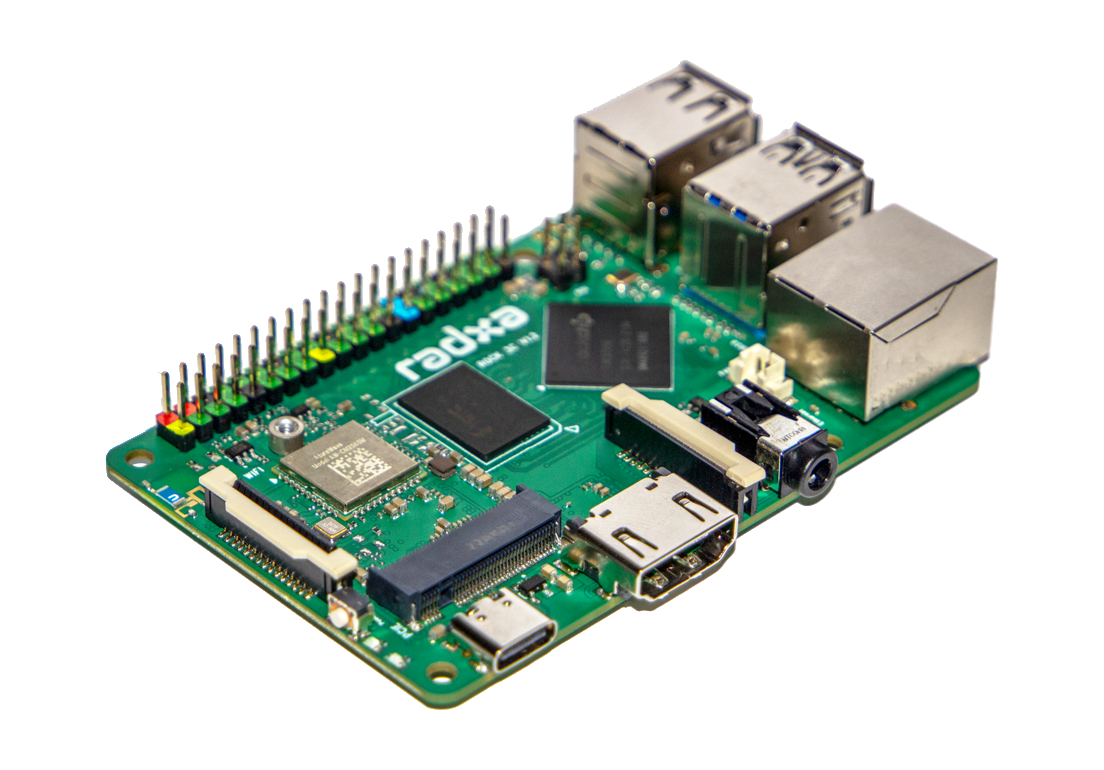
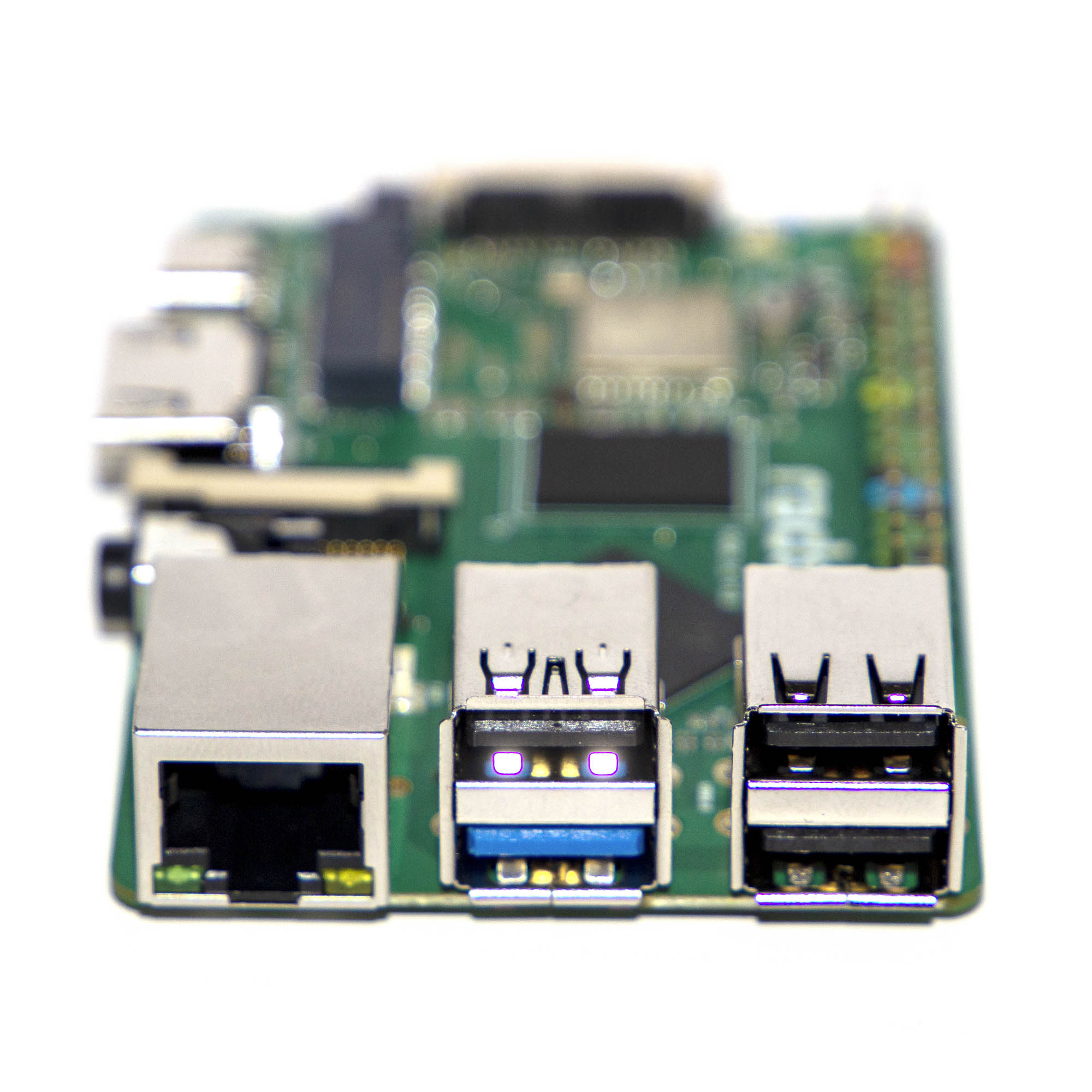
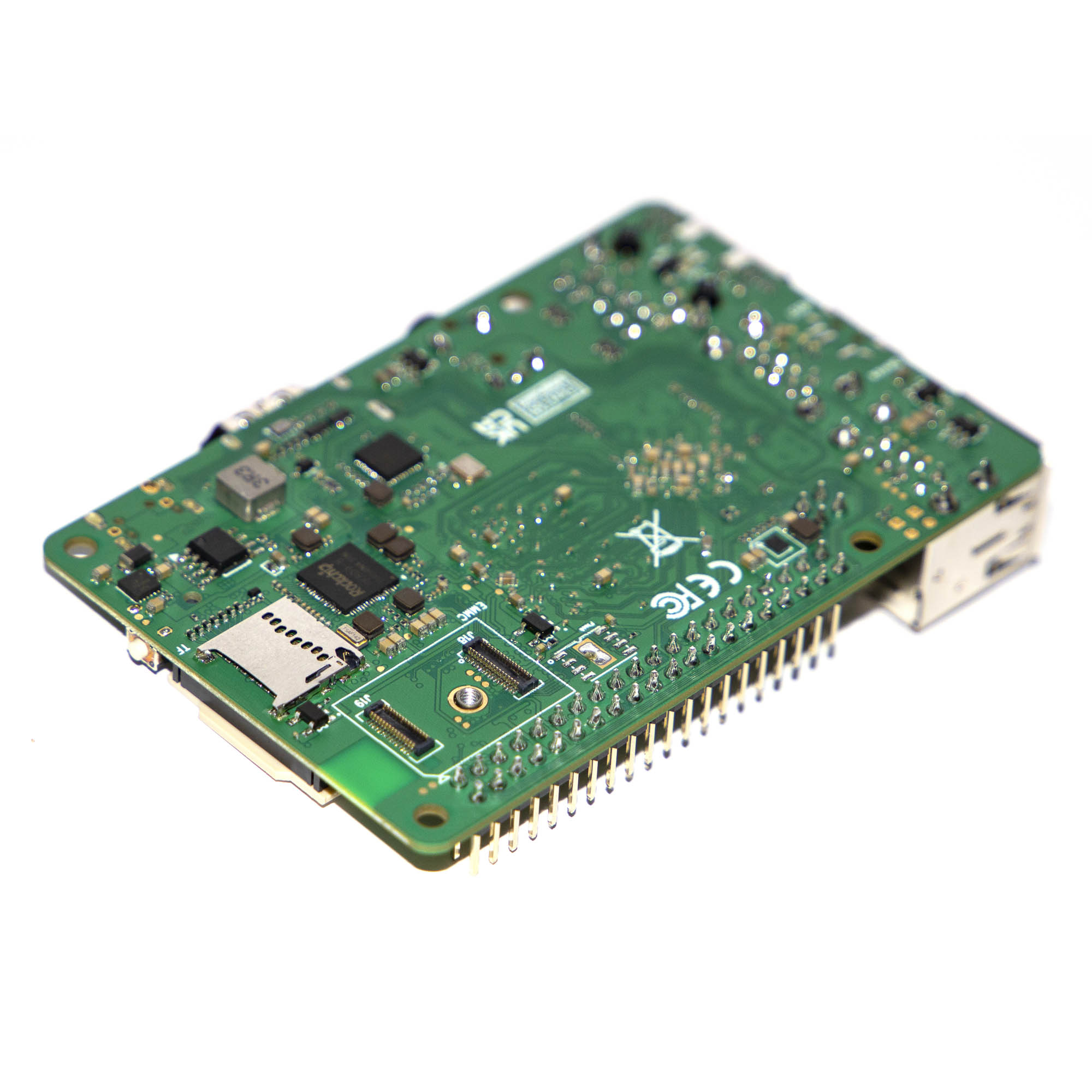
You get the same convenience of an on / off switch, and there’s a 3-pin fan connector this time for control feedback.
The final nicety is the addition of an external battery connector on the underside of the board for the RTC, keeping the BOM count down and streamlining designs.
The ROCK 3A has the same size, form factor and mounting holes as the Raspberry Pi 3 Model B+, the difference being the USB-C power connector, so RPI 3B+ cases may need to be modified accordingly.
Currently, the ROCK 3A is available off the shelf as a 2GB RAM version, but talk to OKdo sales if you have other requirements in volume.
Operating Systems

All the boards offer a variety of different operating systems and Linux kernel versions. The Raspberry Pi 3 Model B+ has its own 32-bit version of Debian Bullseye, which is excellent, and there’s a 64-bit version, which is still not recommended.
The ROCK 3A and ROCK 3C both have officially supported 64-bit versions of Debian Bullseye, Ubuntu Server 22.04 (Jammy) as well as Android 11 images.
The ROCK 3A and ROCK 3C are currently on kernel 5.10, and if you roll your own, you can have both stable (6.1) and latest (6.4) mainline kernels on the ROCK 3A.
Depending on your requirements, there’s also a host of 3rd party OSs for all 3 boards.
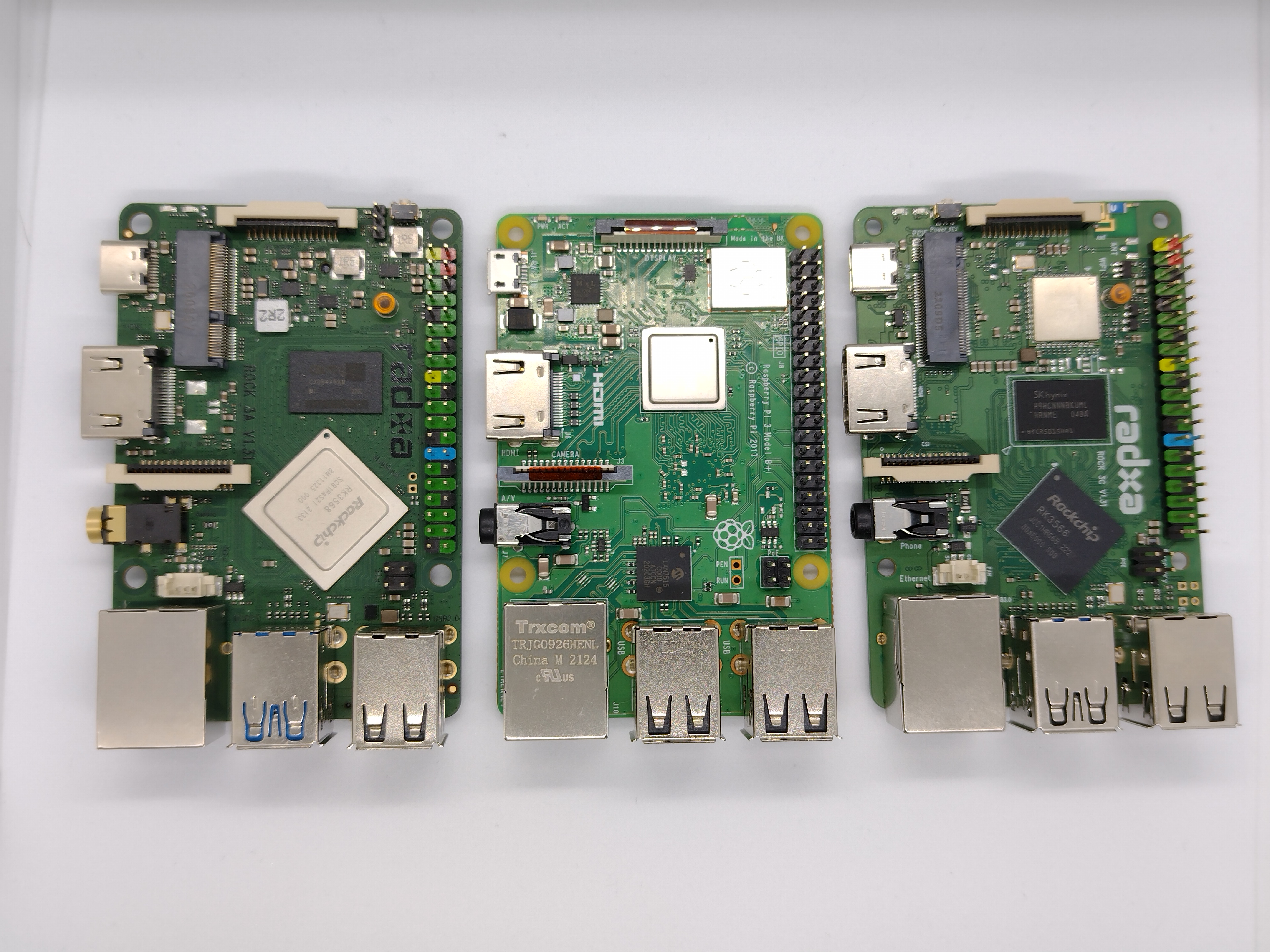
Summary
We all love the Raspberry Pi 3B+ as a powerful low-cost SBC for embedded, but the sun is setting on this design and for a similar price point, you can have the same or better performance with the more contemporary ROCK 3 Model A or ROCK 3 Model C boards, along with many more useful features.
I won’t be buying any more Raspberry Pi 3 Model B+ boards. Now that I’ve switched, there’s no going back, even if I could get hold of one. So check them out, they’re available!
By Pete Milne
Technical Reference
- ROCK 3 Model A Product Brief
- ROCK 3 Model A Schematic
- ROCK 3 Model C Product Brief
- ROCK 3 Model C Schematic


Let’s invent the future together
What’s your challenge? From augmented reality to machine learning and automation, send us your questions, problems or ideas… we have the solution to help you design the world. Get in touch today.


